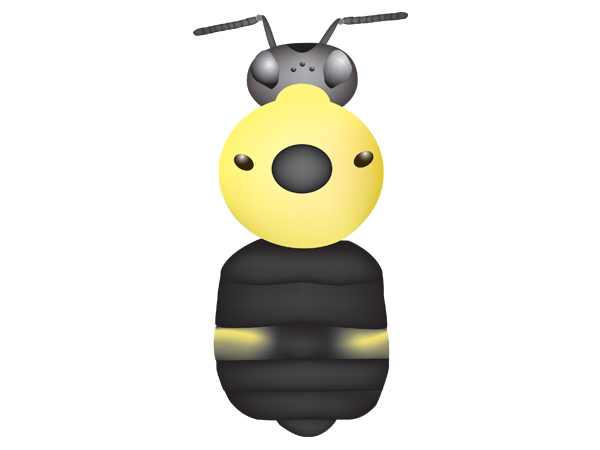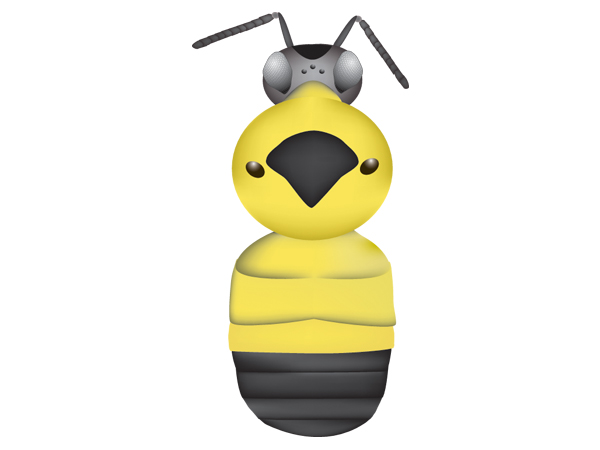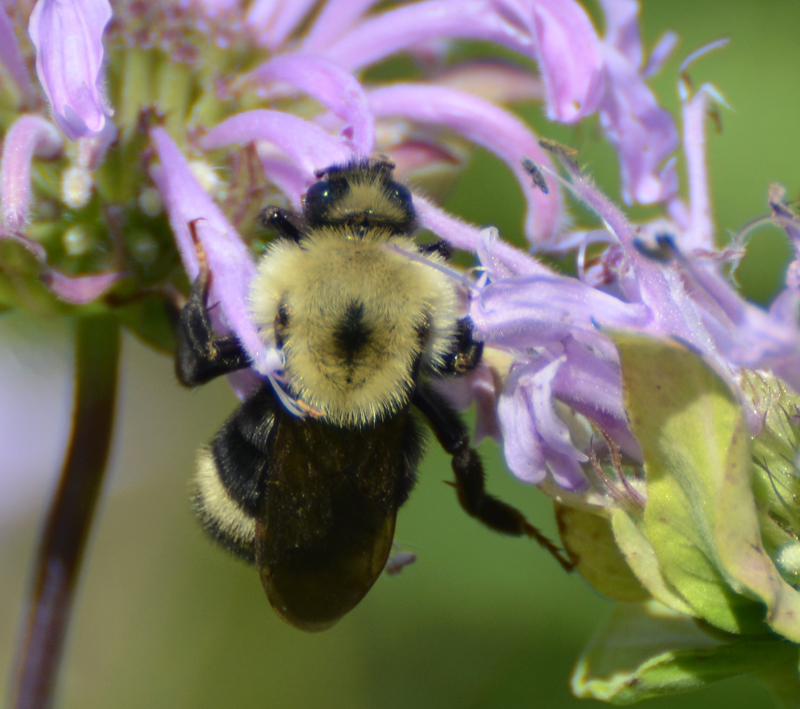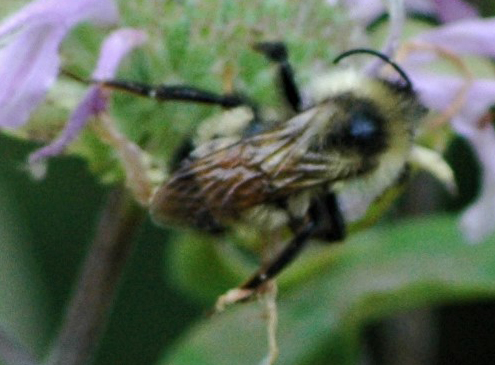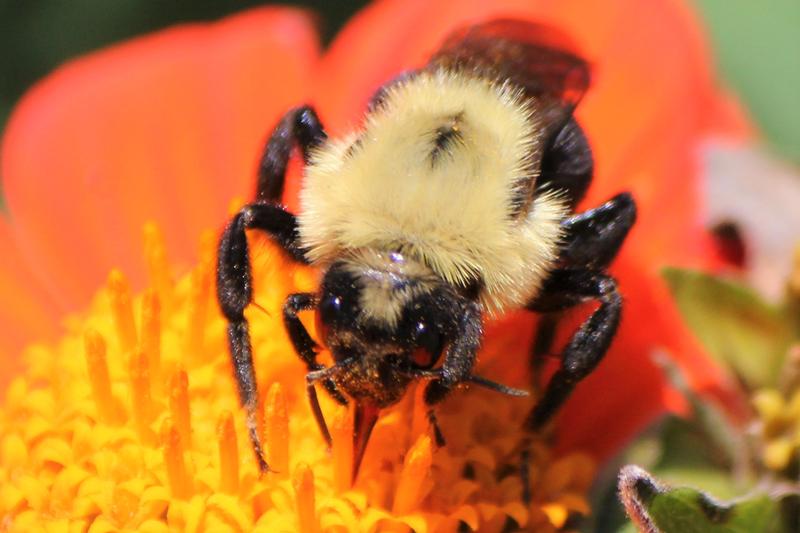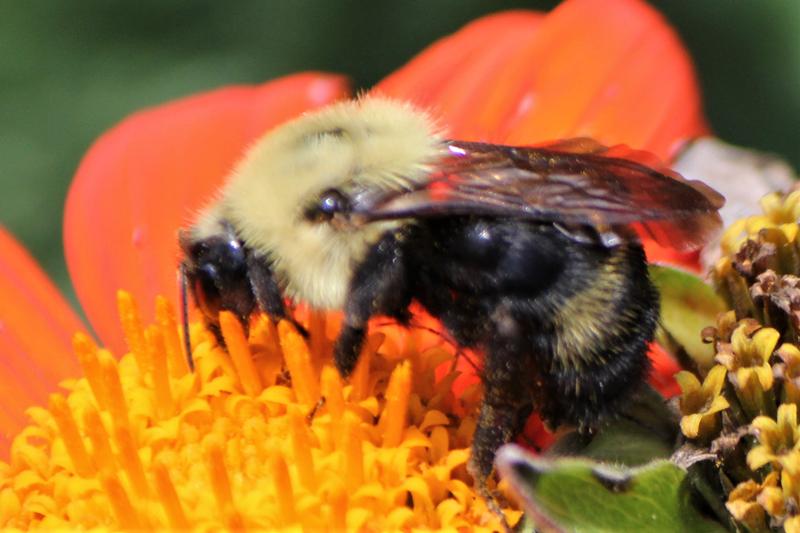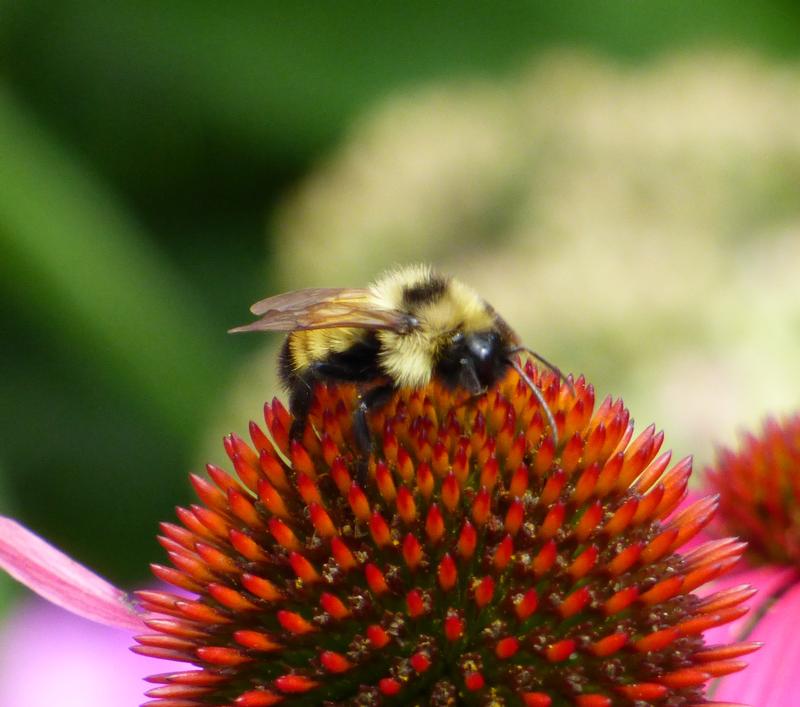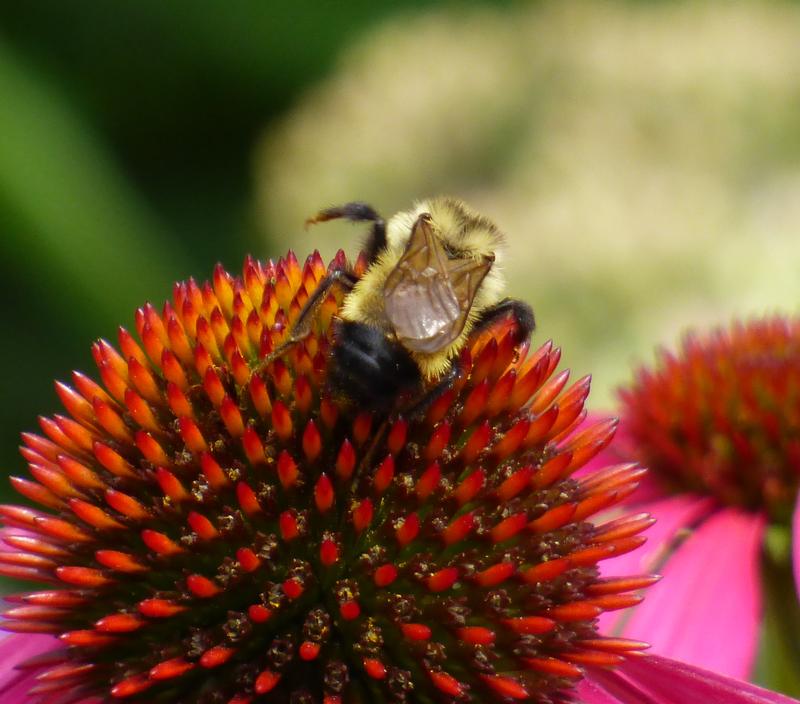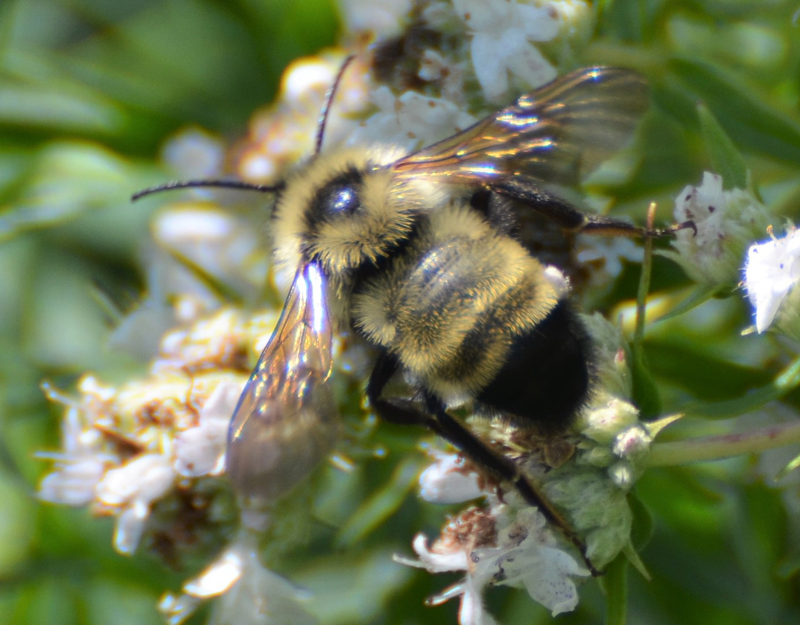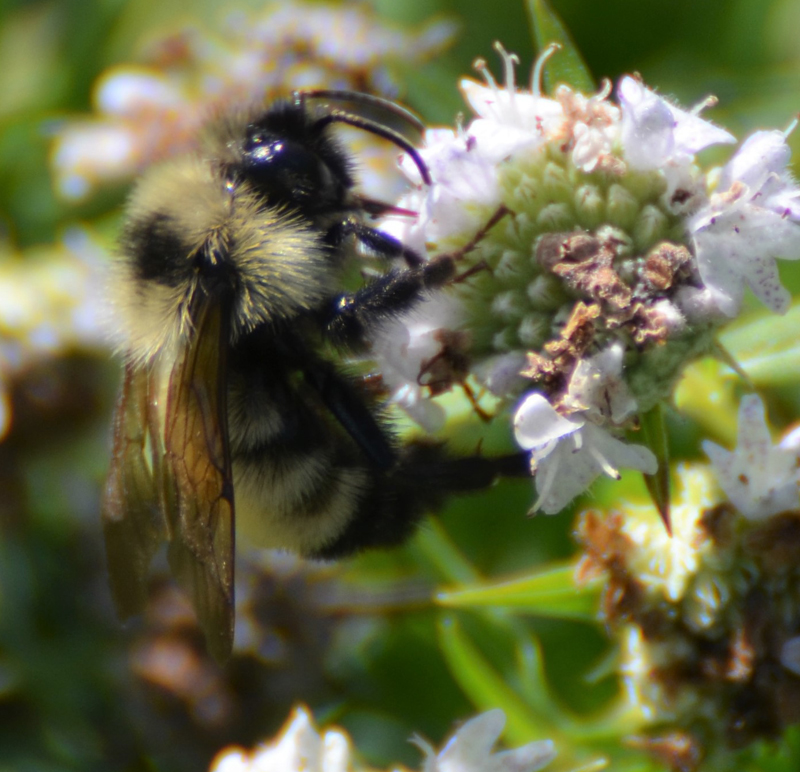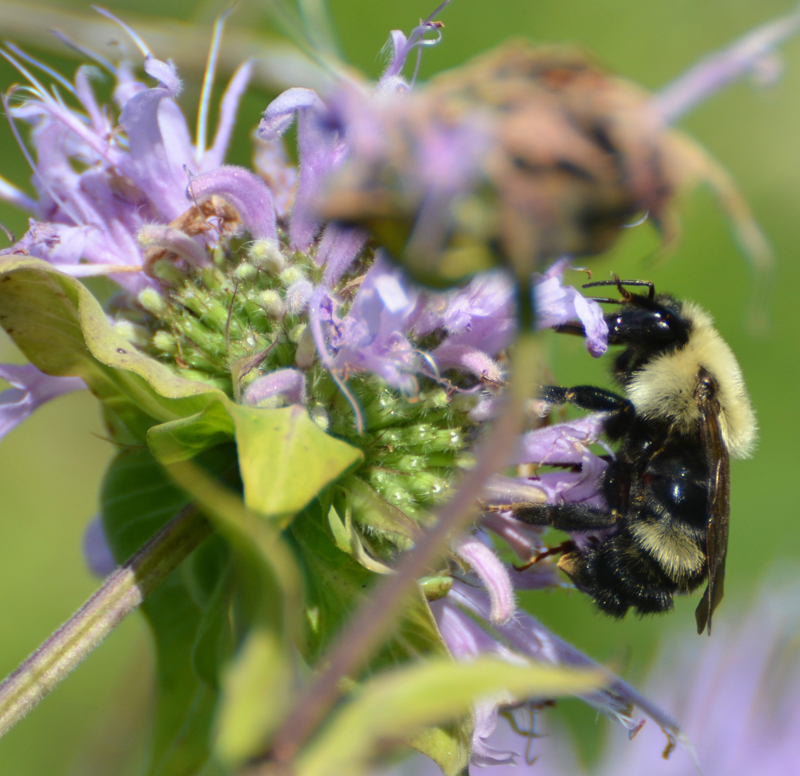
Status-Global/State:
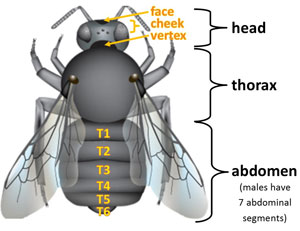
Identification:
- Female – Face intermixed or mostly black and vertex yellow. Thorax mostly yellow with a black spot occasionally. Abdomen color patterns are varied (see photos) T1-2 black or intermixed and T4-5 and T6 black.
- Male – Face intermixed or mostly black and vertex yellow. Thorax with black spot or patch. Abdominal segments T1 yellow and T4-T6 black; segments T2-3 either yellow or intermixed especially on the sides.
- Other distinguishing features – Abdomen shiny, short cheek/face, and wings are light brown.
Similar Wisconsin Species:
Similar bumble bee species in Wisconsin are the rusty patched bumble bee (B. affinis), confusing bumble bee (B. perplexus), and the half-black bumble bee (B. vagans) (Colla et al. 2011, Williams et al. 2014).
Description of Habitat/Range:
Habitat types are variable, and likely depend on host species. In Illinois, found active in the fall near woodlands (Hatfield 2015)
Nectar Plants
Food plants include Asclepias (milkweeds), Asters, Cirsium (thistles), Eupatorium (Joe-pye weed), Liatris, Pycnanthemum, Rubus (blackberry), Solidago (goldenrods), Trifolium (clovers), Verbena (vervains), and Veronia (Williams et al. 2014, Colla et al. 2011).
Data from verified B3 observations [updated 2/28/2024].
Flight Season:
The majority of observation records in Wisconsin took place June-September.
Literature Cited:
Colla, S., Richardson, L. and Williams, P. (2011) Bumble Bees of the Eastern United States. A product of the USDA Forest Service and the Pollinator Partnership with funding from the National Fish and Wildlife Foundation.
Hatfield, R., Jepsen, S., Thorp, R., Richardson, L. & Colla, S. 2014. Bombus citrinus. The IUCN Red List of Threatened Species 2014: e.T44937676A68983052.
Williams, P.H., Thorp, R.W., Richardson, L.L. and Colla, S.R. (2014) The Bumble bees of North America: An Identification guide. Princeton University Press, Princeton.
